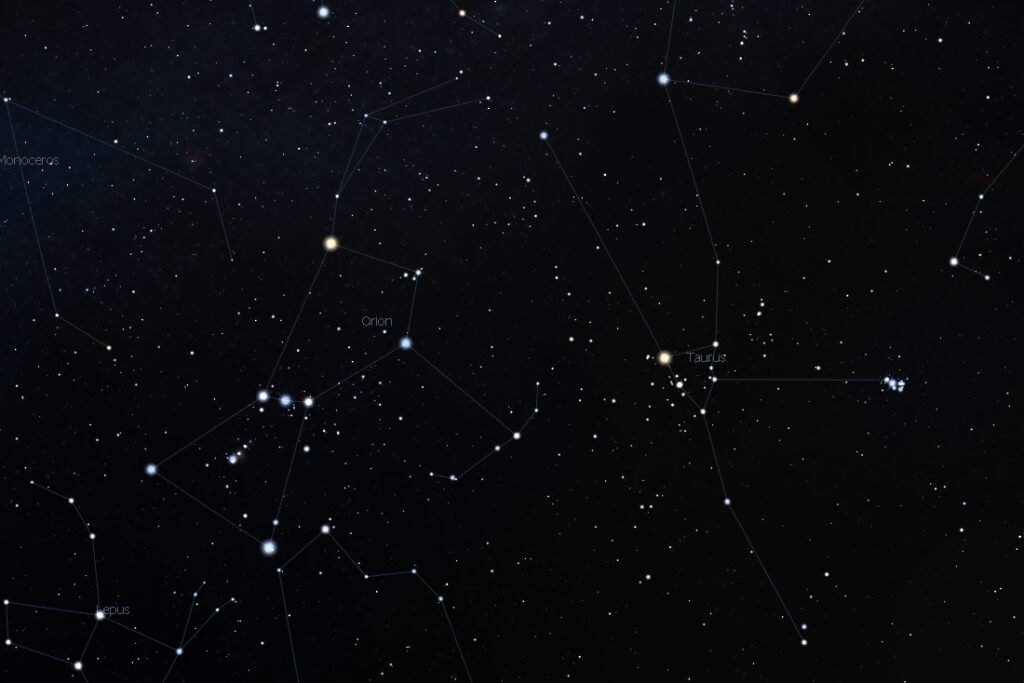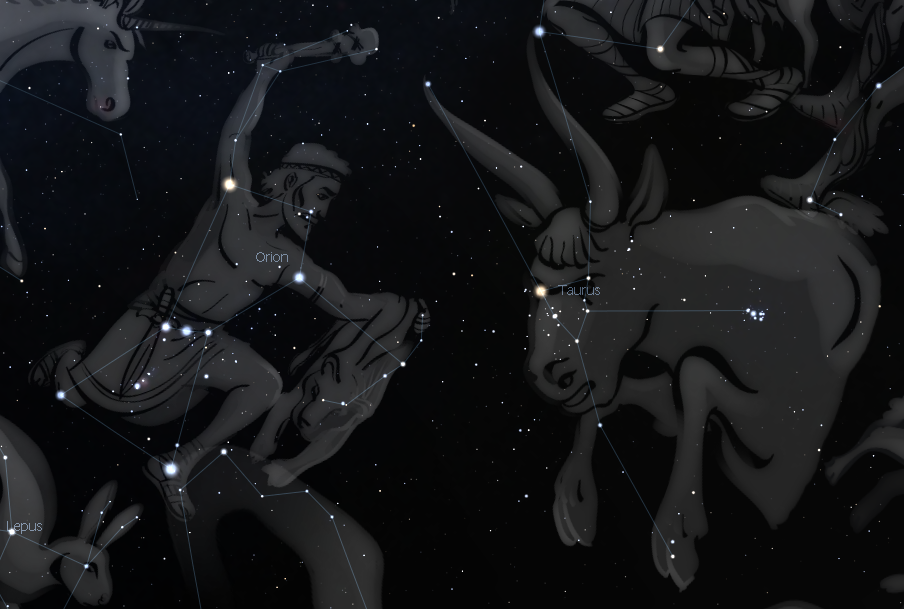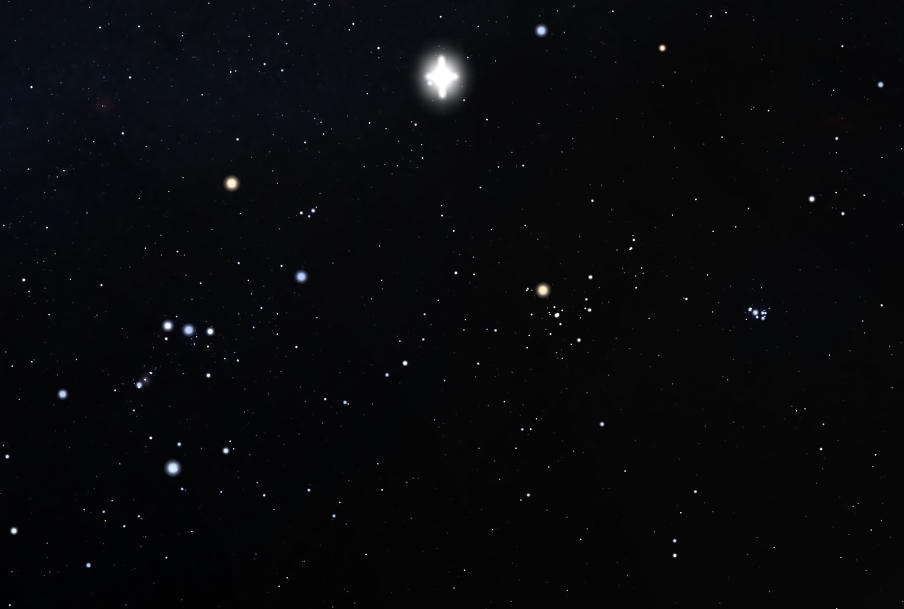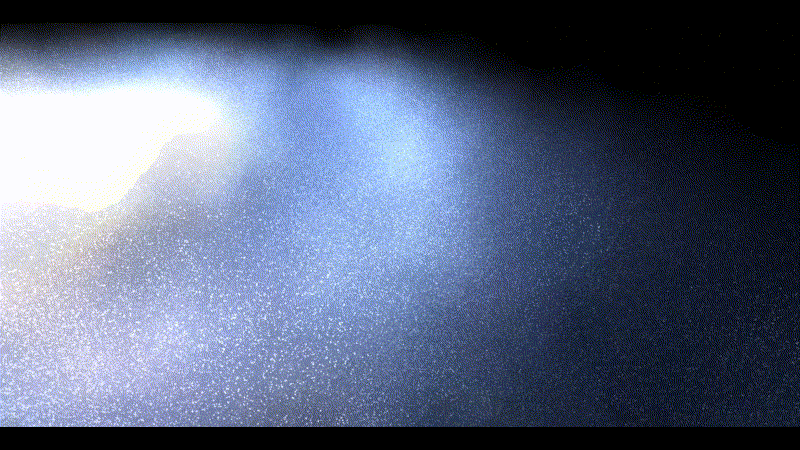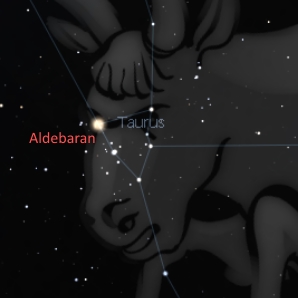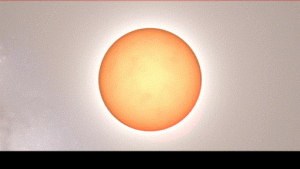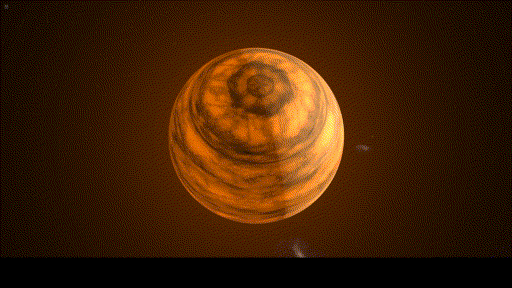The constellation Taurus lies between the constellation Orion, and the Pleiades star cluster.
The Pleiades, also known as the “Seven Sisters,”is an open cluster of hot B-type stars, 444 light years away, yet easily visible to the naked eye. Time-exposure photography reveals the cluster to be surrounded by a faint nebulosity; once thought to be the remnent from the cluster’s formation, it was later determined that the cluster is drifting through an unrelated cloud in the interstellar medium.
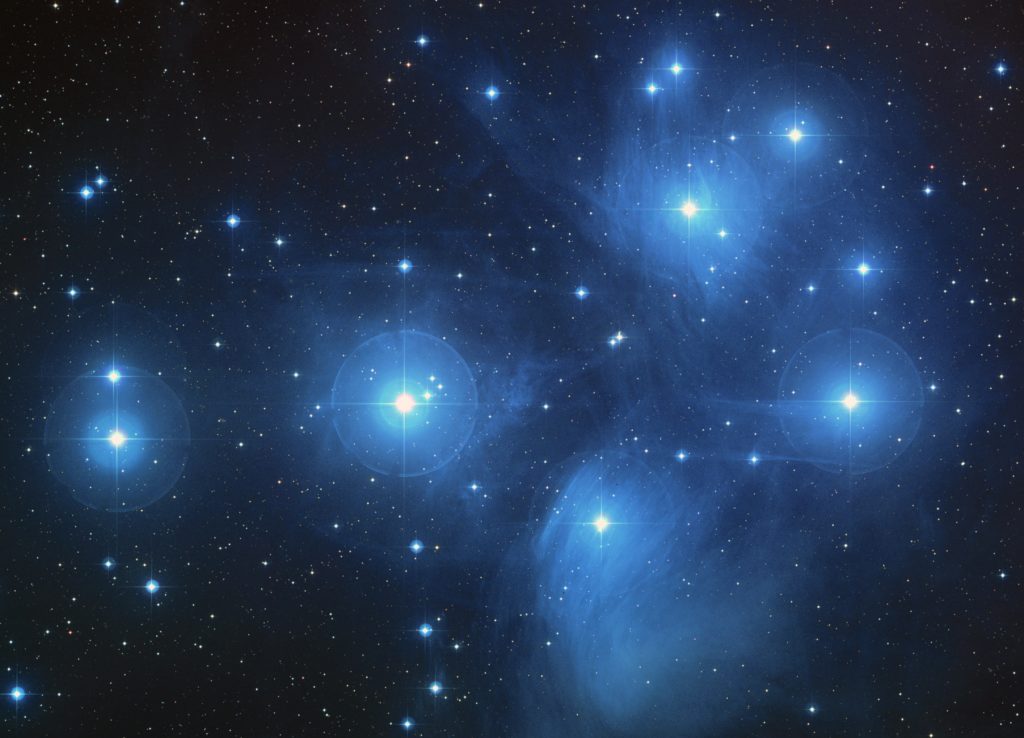 M45 – the Pleiades open star cluster consists of approximately 3,000 stars. Credit: NASA, ESA, AURA/Caltech, Palomar Observatory The science team consists of: D. Soderblom and E. Nelan (STScI), F. Benedict and B. Arthur (U. Texas), and B. Jones (Lick Obs.)
M45 – the Pleiades open star cluster consists of approximately 3,000 stars. Credit: NASA, ESA, AURA/Caltech, Palomar Observatory The science team consists of: D. Soderblom and E. Nelan (STScI), F. Benedict and B. Arthur (U. Texas), and B. Jones (Lick Obs.)In 1054, Chinese, Japanese, Korean, and Arab astronomers noted a bright “guest star” in Taurus – a supernova so bright, it was visible during the day!
In 1734, English astronomer John Bevis first observed the wispy remnants from that supernova.
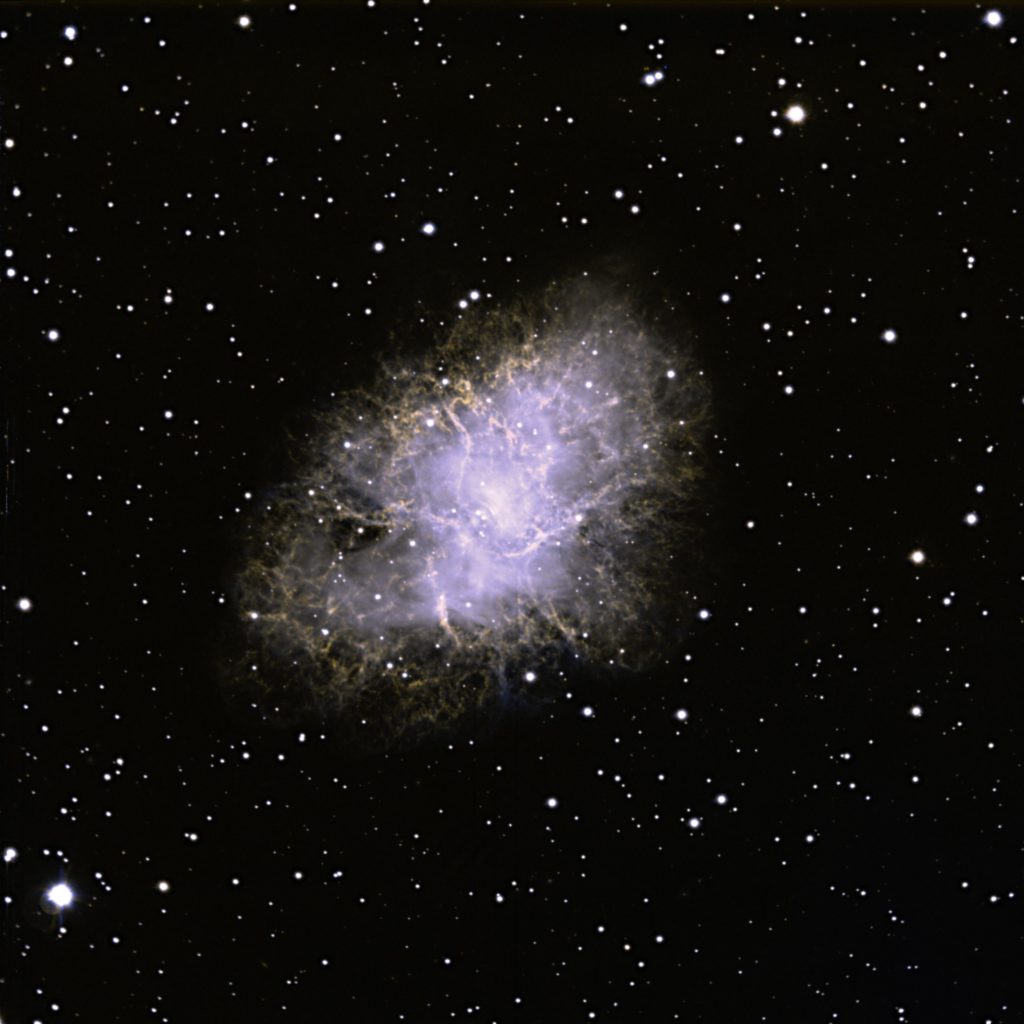 M1 – the Crab Nebula Supernova remnant. Credit: Vatican Observatory Foundation/Vatican Observatory/VATT
M1 – the Crab Nebula Supernova remnant. Credit: Vatican Observatory Foundation/Vatican Observatory/VATTThe Crab Nebula has been expanding rapidly outward from its progenitor star ever since that titanic explosion in 1054 – currently at a rate of 1,500 km/s. The nebula is about 6500 light-years distant, and is about 11 light-years across.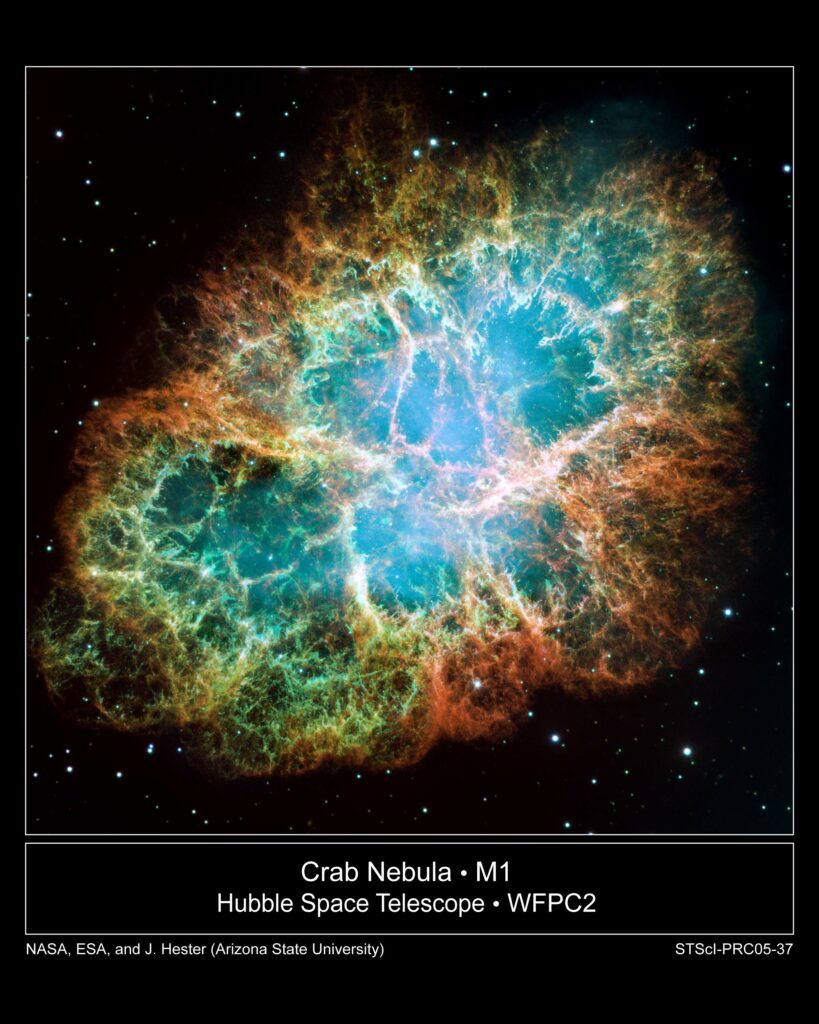
The nebula’s filaments are remnants from the progenitor star’s atmosphere that were blasted into space. The nebula consists mostly of ionized hydrogen and helium, with a mix of other elements such as oxygen, carbon, neon, nitrogen, sulfur and iron. Over hundreds of millions of years, these elements will disperse into the interstellar medium – to become the next generation of stars in our Milky Way galaxy.
At the heart of the Crab Nebula is a type of neutron star called a pulsar – the fantastically dense remains of the progenitor star, with an intense magnetic field, rotating 30 times a second, spraying radiation out into space.
“A neutron star is the closest thing to a black hole that astronomers can observe directly. It is the crushed core of a massive star that ran out of fuel, collapsed under its own weight, and then exploded as a supernova. The matter left behind after the explosion is compressed into a ball only about 12 miles across but with a mass roughly half a million times more than the mass of the Earth. One teaspoon of a neutron star weighs 1 billion tons, roughly twice the combined weight of all the cars in the United States.
Neutron stars can reach speeds of rotation as fast as the blades of a kitchen blender — up to 43,000 revolutions per minute (rpm), and can have magnetic fields a trillion times stronger than the Earth’s.” ~Francis Reddy / Barbara K. Kennedy / Penn State University
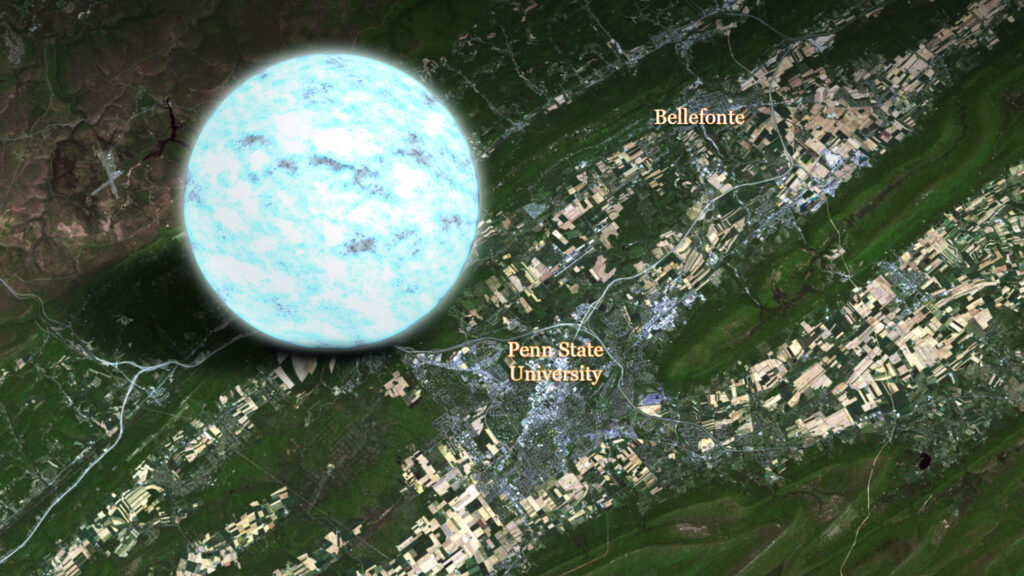 Illustration of a neutron star compared to Penn State University. Credit: NASA Goddard Space Flight Center / Penn State University
Illustration of a neutron star compared to Penn State University. Credit: NASA Goddard Space Flight Center / Penn State UniversityThe outflowing electromagnetic wind from the Crab Pulsar gets accelerated to ultrarelativistic speeds by its intense rotating magnetic field; this generates synchrotron emissions, which in turn produce the emissions we see from Earth – ranging from radio waves through gamma rays.
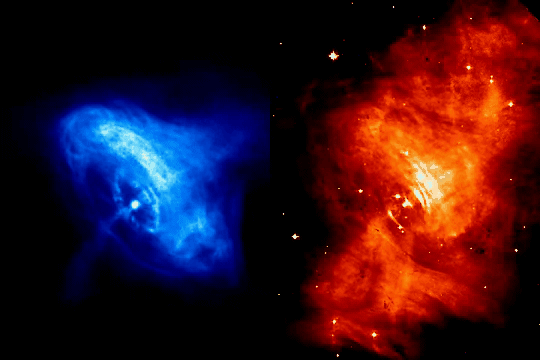 Time-lapse of shock waves emanating from the Crab Pulsar interacting with the surrounding nebula. Credit: NASA, JPL-Caltech (visible light – right), Chandra (X-rays -left)
Time-lapse of shock waves emanating from the Crab Pulsar interacting with the surrounding nebula. Credit: NASA, JPL-Caltech (visible light – right), Chandra (X-rays -left)In 2015 it was confirmed that Aldebaran has a hot-Jupiter type exoplanet orbiting it at 1.46 AU.
While working on an this article, I got to wondering what would happen if you did put a Neutron Star above the Earth, and unpaused time? So I simulated that in Universe Sandbox ²:
